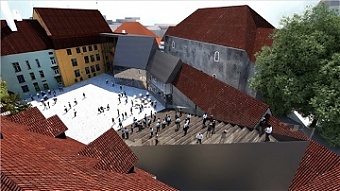Ecology, Energy, Estonia, Legislation, Markets and Companies, Transport
International Internet Magazine. Baltic States news & analytics
Friday, 19.04.2024, 09:10
Tallinn completes development strategy for period until 2035
 Print version
Print version |
|---|
Six objectives being to do with urban space, community, green turnaround, global city, homeliness, as well as healthy lifestyles and exercise, are central to the new development strategy of the city, spokespeople for the city government said on Wednesday. The strategy also focuses on values and changes in the way of thinking, pursuing which it is possible to achieve the goals in 15 years.
"Our mission is to transform Tallinn into the best place to life for those who are here, an attractive destination for those who arrive here, and a good starting place for those who start out from here. We also have a strategic goal to emerge as one of the drivers of the green turnaround in Estonia: our economy and lifestyle will improve our own wellbeing and inspire others," Mayor Mihhail Kolvart said in the press release.
The mayor said that, pursuing the goals set out in the development strategy, the city intends to accomplish several interventions concerning urban space, such as lay out Tondiraba as the biggest park in Estonia, complete the insect strip, build a tram connection to the passenger port and the Ravala transport corridor.
"The goals of the development strategy are realistically accomplishable and will help raise Tallinn's competitiveness as a living and business environment, while of course keeping in mind the principles of sustainability and climate friendliness," Kolvart said.
The six objectives entail as sub-goals the creation of a human-friendly urban environment, opening the city to the sea, linking together the green network, smart economy, placing value in learning, research and innovation, culture and events, supporting healthy lifestyles, a new level of urban mobility, developing of circular economy, supporting a biodiverse natural environment in the city, preservation of cultural heritage, a safe and friendly environment, consideration for each other, and a strong civil society.
Some 5,000 residents of the city made their contributions to the development of the strategy.
The residents who took part in the four-stage inclusion process shared their own and their organization's ideas, assessed interim versions of the strategy, took part in workshops, filled in questionnaires and offered their opinions about the wording of the document.
"I am very glad that thousands of people took part in the creation of this very important fundamental document, the input provided by them is invaluable," Kolvart said.
The discussion of the development strategy that would become the roadmap for the city's organization after its adoption will start in the city council soon.
- 28.01.2022 BONO aims at a billion!
- 30.12.2020 Накануне 25-летия Балтийский курс/The Baltic Course уходит с рынка деловых СМИ
- 30.12.2020 On the verge of its 25th anniversary, The Baltic Course leaves business media market
- 30.12.2020 Hotels showing strong interest in providing self-isolation service
- 30.12.2020 EU to buy additional 100 mln doses of coronavirus vaccine
- 30.12.2020 ЕС закупит 100 млн. дополнительных доз вакцины Biontech и Pfizer
- 29.12.2020 В Латвии вводят комендантский час, ЧС продлена до 7 февраля
- 29.12.2020 Latvia to impose curfew, state of emergency to be extended until February 7
- 29.12.2020 Linde Gas открывает завод в Кедайняйской СЭЗ
- 29.12.2020 В Риге можно изолироваться в трех гостиницах








 «The Baltic Course» Is Sold and Stays in Business!
«The Baltic Course» Is Sold and Stays in Business!

